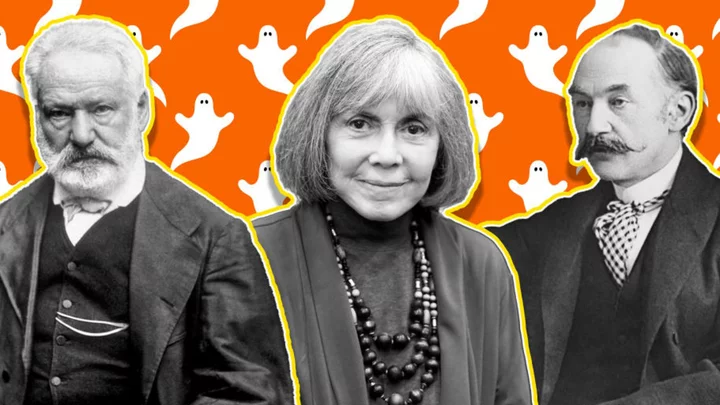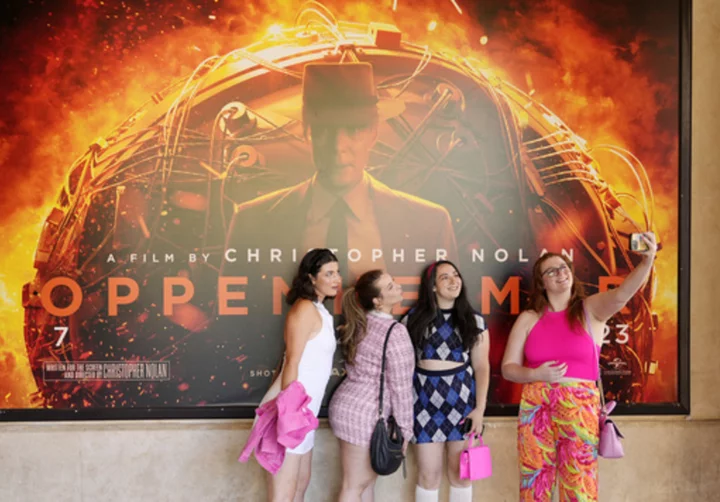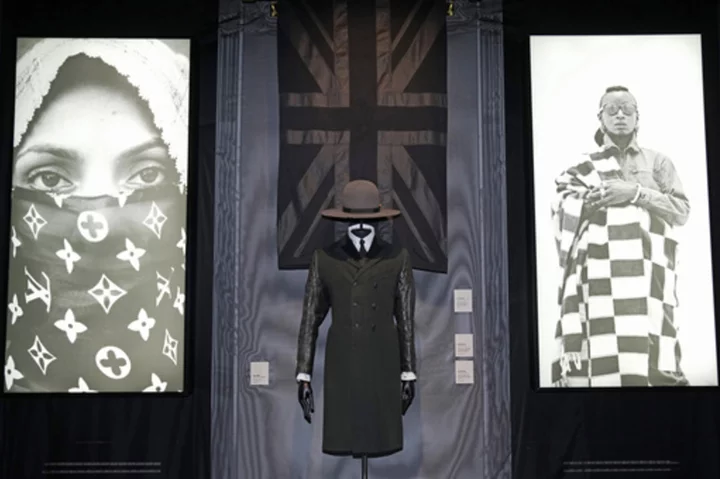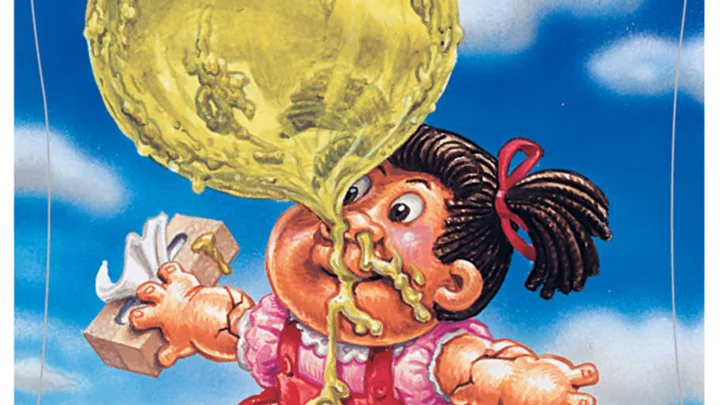Ghosts haunt the pages of many books, from the good-natured spirits in Charles Dickens’s A Christmas Carol (1843), to the hungry specters that fill The Overlook Hotel in Stephen King’s The Shining (1977). But to some authors, ghosts aren’t merely relegated to the world of fiction. Here are nine novelists and poets who were convinced that ghosts actually exist—some of whom even reported paranormal encounters.
1. Anne Rice
Interview With the Vampire (1976) author Anne Rice didn’t actually believe that vampires were stalking the streets of her native New Orleans, but she did believe that ghosts were. In an interview with NPR, Rice mentioned that her 19th-century mansion—commonly known as the Rosegate Mansion—was haunted. “It has legends. It has ghosts,” she said in an interview with NPR. “I don’t see them, but other people have seen them.” Former resident Pamela Starr Clapp is said to be one of the ghosts haunting the home; she lived there for more than 70 years (during which time she carved her initials into the ballroom’s mirrors) before dying there in 1934. Rosegate Mansion also provided Rice with writing inspiration, serving as the Mayfair’s house in her Lives of the Mayfair Witches trilogy.
2. Thomas Hardy
In a 1901 interview with theater critic William Archer, Thomas Hardy, author of classics such as Far from the Madding Crowd (1874), Tess of the d’Urbervilles (1891), and Jude the Obscure (1895), spoke of his desire to see a ghost. “I would cheerfully have given 10 years of my life to see a ghost—an authentic, indubitable spectre,” he said, considering himself “cut out by nature to be a ghost-seer” because of his “will to believe” and being “morbidly imaginative.”
The English author had to wait 18 more years, but he did eventually get his wish. “He saw a ghost in Stinsford Churchyard on Christmas Eve,” his wife, Florence, reported in a 1919 letter [PDF]. Hardy put a holly sprig on his grandfather’s grave and a man next to him said, “A green Christmas,” to which Hardy replied, “I like a green Christmas.” When the man then walked into the church, Hardy followed, Florence said, “to see who this strange man in 18th century dress might be—and found—no-one.”
In 1927, Florence recalled another ghostly encounter that her husband had experienced a few years before when they hosted a tea party. She wrote that Hardy “noticed a stranger standing by me most of the time.” He later asked her who it was and was told “there was no stranger present, and I gave him the names of the three men who were there, all personal friends. He said that it was not one of these, and seemed to think that another person had actually been there.”
3. Victor Hugo
At the end of 1851, Napoleon III declared himself Emperor of France; soon after, Victor Hugo was banished from the country because of his outspoken opposition to Napoleon’s authoritarian rule. The author eventually settled in the United Kingdom’s Channel Islands, during which time he penned Les Misérables (1862). While staying in Jersey, Hugo began conducting table-tapping (a.k.a table-turning) séances—where spirits supposedly communicate via tapping on or tilting a table. The list of famous figures who he believed he spoke to is lengthy; it includes William Shakespeare, Joan of Arc, and Galileo. He also apparently communicated with abstractions, including the novel, the ocean, Russia, death, and even the finger of death.
Hugo himself is also said to have conversed from beyond the grave. The author is seen as a prophet in Cao Dai, a Vietnamese religion, and it is believed that he communicated from the afterlife through séances (which are now banned in the religion).
4. Harriet Beecher Stowe
Uncle Tom’s Cabin (1852) author Harriet Beecher Stowe and Middlemarch (1871–72) author George Eliot maintained a transatlantic epistolary friendship. In an 1872 letter, Stowe revealed to Eliot that she had communicated, via a “toy planchette,” with the ghost of Jane Eyre (1847) author Charlotte Brontë, who had died 17 years earlier.
The returned Brontë sister was apparently “grieved at the severity of some criticisms” launched at her novel Shirley (1849). Although Stowe briefly considered the possibility that a different spirit was merely passing itself off as Charlotte, she maintained “That spirits unseen have communicated with me I cannot doubt.”
Eliot was less convinced. “Your experience with the planchette is amazing,” she replied (emphasis hers) on June 4 [PDF], before adding that it was also “to me … so enormously improbable, that I could only accept it if every condition were laid bare, and every other explanation demonstrated to be impossible.”
5. Nathaniel Hawthorne
Each day, Nathaniel Hawthorne passed a man named Dr. Harris reading a newspaper in the Boston Athenaeum. One evening he was told that Dr. Harris had died, but The Scarlet Letter (1850) author was sure that he had seen the doctor earlier that day. In a piece about the incident, Hawthorne wrote that he simply “set down the apparition as a mistake of my own.” But the next day he entered the library and “there, to my astonishment, sat the grey, infirm figure of the deceased Doctor, reading the newspaper as was his wont! His own death must have been recorded, that very morning, in that very newspaper!”
He continued to see the ghost in the same place for months afterwards but never sought to investigate it further. “This equanimity, and almost indifference, on my part the careless way in which I glanced at so singular a mystery and left it aside is what now surprises me as much as anything else in the affair,” Hawthorne recalled.
6. Richard Matheson
I Am Legend (1954) author Richard Matheson didn’t just believe in ghosts, he also believed in parapsychology, which encompasses scientifically unproven phenomena such as clairvoyance, telekinesis, and reincarnation. “As a Pisces,” Matheson explained to Hinduism Today in 1999, “I have been fascinated about parapsychology, metaphysics, and the supernatural ever since I was a teenager.” But in a 2002 interview with The Television Academy Foundation, Matheson said that details about telepathy and ghosts no longer concerned him. “I’m interested now only in the bottom line of it all”—that bottom line being that reincarnation is “the fundamental truth of reality.” His ideas of the afterlife and reincarnation worked their way into What Dreams May Come (1978), and they’re expanded upon in his philosophical book, The Path (1999).
7. W.B. Yeats
Nobel Prize-winning poet William Butler Yeats dedicated much of his time to studying the supernatural. In 1890, he joined The Golden Dawn, a secret society that purported to practice magic, and in 1911, he became a member of The Ghost Club, an organization that conducted paranormal investigations.
Other notable authors who were members of The Ghost Club include Arthur Conan Doyle and Charles Dickens. However, Dickens remained skeptical of ghostly phenomena, declaring in an 1859 letter that “I have not yet met with any Ghost Story that was proved to me, or that had not the noticeable peculiarity in it—that the alteration of some slight circumstance would bring it within the range of common natural probabilities.”
But Yeats was a believer. While on honeymoon in 1917, his new wife, Georgie Hyde-Lees, began automatic writing, which involves a ghost using a medium to write. “What came in disjointed sentences, in almost illegible writing, was so exciting, sometimes so profound, that I persuaded her to give an hour or two day after day to the unknown writer,” Yeats wrote in the 1937 second edition of A Vision. The original 1925 version failed to credit Georgie at all, despite the collection being created from the many hours she spent channeling the spirits, who allegedly declared, “we have come to give you metaphors for poetry.” After Yeats’s cursory mention of her in the revised introduction (but continued failure to include her name as co-author), it took academia around another 50 years to properly acknowledge Georgie’s authorship. “We are having to take an extraordinary fact into far more serious consideration than we have before,” Yeats scholar Margaret Mills Harper wrote in 1988. “Much of the literary output of one of our century’s major poets from the year of his marriage on was directly influenced by a unique imaginative partnership with a highly creative woman.”
8. Mary Shelley
In 1824, The London Magazine published Mary Shelley’s essay “On Ghosts,” in which the Frankenstein (1818) author revealed her belief in spirits. While she admitted to having never encountered one herself (“except once in a dream” from which she “awoke trembling”), she recounted the two ghost stories that convinced her of their existence. The first story belonged to her friend Thomas Jefferson Hogg, who she described as “a man of strong and virile intellect.” For a few weeks he was allegedly visited during the night by the ghost of a deceased loved one, with the apparition “gently stroking his cheek and spreading a serene calm over his mind.”
The second story came from soldier Angelo Mengaldo, who was “by no means addicted to superstition,” according to Shelley. He reported seeing the ghost of a friend who had shot himself in the head. “The figure of his friend issued from the hedge and stood before him, mutilated as he had seen him after his death,” Shelley wrote. “This figure he saw several times, always in the same place. It was impalpable to the touch, motionless, except in its advance, and made no sign when it was addressed.”
9. James Merrill
Poet James Merrill and his partner David Jackson spent 40 years speaking to spirits via Ouija board, with Jackson serving as the medium and Merrill acting as the scribe. Their most frequent spirit visitor was Ephraim, a Jewish man from the time of ancient Greece. The poems that emerged from these otherworldly conversations made their way into Merrill’s 1976 book Divine Comedies (which won the Pulitzer Prize) in the form of “The Book of Ephraim.” “Ephraim” was later included in Merrill’s three-part epic poem The Changing Light at Sandover, published between 1976 and 1980, all of which was derived from his interactions with the occult.
Whether Merrill was using the Ouija board to mine his own subconscious (as Sylvia Plath may have done) or whether he genuinely thought that he was communicating with the other side remains uncertain. When asked if he believed, Merrill would quote the words on the board: “Yes and no.”
This article was originally published on www.mentalfloss.com as 9 Authors Who Believed in Ghosts.









